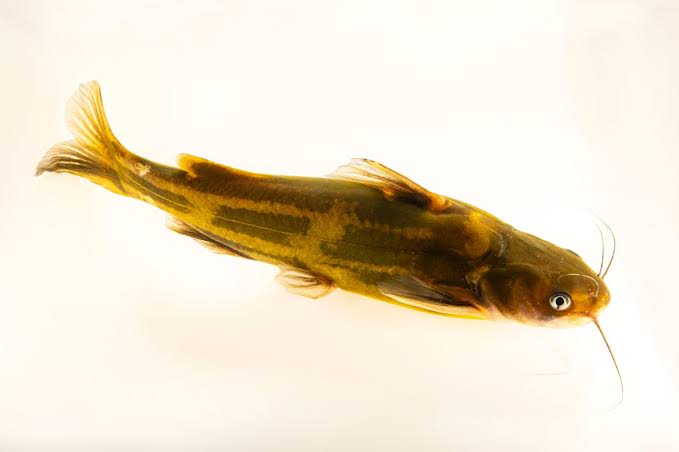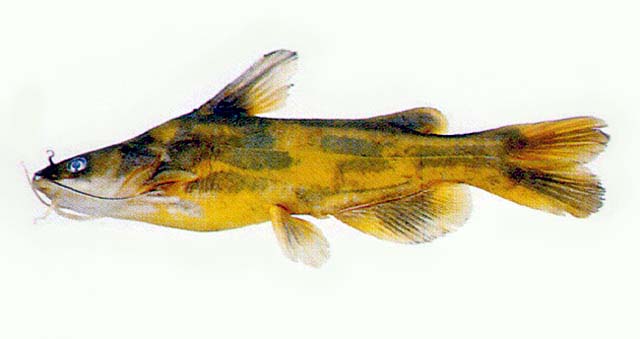Introduction: Tachysurus fulvidraco Overview
Tachysurus fulvidraco, commonly known as the yellow catfish, is a species of freshwater fish belonging to the family Bagridae. Native to East Asia, this fish plays a crucial role in its local ecosystems. This article offers an in-depth exploration of Tachysurus fulvidraco, covering its scientific classification, physical characteristics, habitat, behavior, ecology, and conservation status.

Tachysurus fulvidraco falls under the following taxonomic categories:
Kingdom: Animalia
Phylum: Chordata
Class: Actinopterygii
Order: Siluriformes
Family: Bagridae
Genus: Tachysurus
Species: T. fulvidraco
This species is a member of the Bagridae family, which is recognized for including large, freshwater catfish species commonly found in Southeast Asia. The genus Tachysurus contains various species of catfish that are mainly distributed across East and Southeast Asia.
The first scientific description of Tachysurus fulvidraco was provided in the late 19th century by ichthyologists studying the diverse aquatic fauna of East Asia. Early studies focused on the fish's distribution in major river systems and its morphological traits. Since then, Tachysurus fulvidraco has been studied extensively for its ecological role, its commercial importance, and its conservation status.

Tachysurus fulvidraco exhibits distinctive features that help in its identification:
Body Appearance: This species has a long, cylindrical body typical of many catfish, with a smooth, scaleless skin that is pale yellow to light brown in color, sometimes with darker markings.
Body Length: Adult individuals can grow up to 1 meter (3.3 feet) in length.
Body Weight: They can weigh as much as 15-20 kg (33-44 lbs), although this can vary based on habitat and diet.
Lifespan: In the wild, Tachysurus fulvidraco can live for 8-10 years, although life expectancy in captivity may be shorter due to varying environmental conditions.
Their elongated bodies and large pectoral fins make them highly efficient in navigating fast-moving waters.
Tachysurus fulvidraco is found predominantly in the Yangtze River basin, the Yellow River, and other freshwater rivers in East Asia. These rivers provide the ideal habitat with slow-moving to moderately fast-flowing water, deep pools, and muddy or sandy riverbeds.
Habitat Preferences: Prefers deep, murky waters with plenty of hiding spots among submerged rocks or plant matter.
Temperature Range: Thrives in water temperatures between 18°C to 28°C (64°F to 82°F), which is typical for temperate river systems.
Their range has been somewhat limited by human activity, particularly pollution and river damming, which has fragmented their natural habitats.
Tachysurus fulvidraco plays an important ecological role as a predator in its freshwater ecosystem. It feeds primarily on smaller fish, invertebrates, and detritus, contributing to controlling populations of smaller organisms.
Feeding Habits: They are opportunistic feeders, using their sensitive barbels to detect prey in the murky waters.
Behavioral Patterns: These catfish are typically solitary, particularly during their adult life stages. However, they may congregate in groups during the breeding season.
Social Behavior: In the wild, Tachysurus fulvidraco does not exhibit strong social hierarchies. Instead, they are more focused on maintaining territory and hunting.
Unlike some other species of catfish, Tachysurus fulvidraco does not undertake long-distance migrations. However, seasonal movements within river systems are common, driven by the search for food and spawning areas. Migration tends to be more localized, focusing on specific breeding or feeding sites within their home river systems.
Nocturnal Feeding: Tachysurus fulvidraco is predominantly nocturnal, becoming more active at night when it hunts for food.
Territoriality: During the day, they are often less active and hide in caves or burrows. They are generally solitary unless they are spawning.
The yellow catfish is an omnivorous predator, primarily feeding on:
Small Fish: They are opportunistic and will feed on smaller fish if the opportunity arises.
Invertebrates: They consume various invertebrates, including crustaceans and insects.
Detritus: Tachysurus fulvidraco also scavenges dead organic matter, playing an essential role in the decomposition process of aquatic ecosystems.
Spawning occurs in spring and summer, during which the fish pair off and lay their eggs in deep, sheltered parts of riverbeds. The female lays thousands of eggs, and both parents guard the nest during the early stages of development. The fry are livebearers and are cared for by the mother after hatching.
Currently, Tachysurus fulvidraco is listed as a species of least concern by the International Union for Conservation of Nature (IUCN). However, the species faces significant threats due to habitat destruction, pollution, and overfishing in some parts of its range. While the population is stable in certain areas, localized declines are observed, particularly in regions where river ecosystems are heavily impacted by human activity.
Threats: Dams, water pollution, and overfishing have significantly impacted local populations.
Conservation Efforts: Ongoing efforts include habitat restoration and the establishment of protected areas within key river systems.
Ecological Importance: Tachysurus fulvidraco plays an important role in maintaining the health of aquatic ecosystems by controlling populations of smaller fish and invertebrates.
Economic Value: As a source of food, Tachysurus fulvidraco is commercially significant, particularly in East Asia where it is a delicacy in some regions. The fish is also valued in ornamental fish markets.
To protect the species, conservation organizations and governments have focused on:
Restoring River Habitats: Efforts to prevent pollution and manage water quality have been a priority in regions where the species is found.
Breeding Programs: Artificial breeding programs have been set up to help ensure the survival of Tachysurus fulvidraco in captivity and to release juveniles into the wild.
Below is a table showing the closest relatives of Tachysurus fulvidraco within the Bagridae family:
| Species | Common Name | Distribution | Size (Length) | Feeding Habits | Conservation Status |
|---|---|---|---|---|---|
| Tachysurus apodus | Yellow Catfish | China, Vietnam | 90 cm | Omnivore | Least Concern |
| Pseudobagrus sinensis | Chinese Catfish | China | 80 cm | Carnivorous | Vulnerable |
| Bagrus bayad | Bayad Catfish | Africa | 1 m | Carnivorous | Least Concern |
Tachysurus fulvidraco is an important species in the freshwater ecosystems of East Asia. Its unique behavior, ecological role, and the pressures it faces due to environmental changes make it a species of interest for both conservationists and scientists. Understanding its taxonomy, life history, and the challenges it faces can help inform better management and conservation strategies to ensure the survival of this fascinating species.
animal tags: fish
We created this article in conjunction with AI technology, then made sure it was fact-checked and edited by a Animals Top editor.